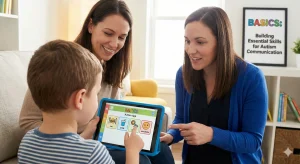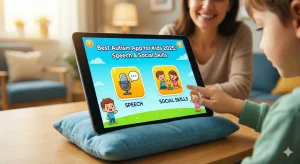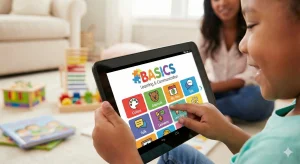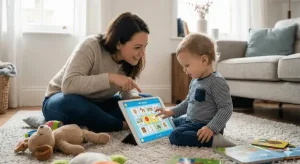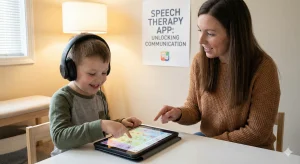Empower Your Autistic Child With Occupational Therapy
By Wellness Hub
Last Updated: October 29, 2025
Raising a child with autism can feel like a journey filled with questions, love, and hope. Many parents wonder how to help their child build independence, manage emotions, and connect with the world around them. One powerful way to do this is through occupational therapy for an autistic child.
Occupational Therapy (OT) is not just about exercises or routines—it’s about helping children participate in the meaningful “occupations” of childhood: playing, learning, and growing. At Wellness Hub Hyderabad, our team of certified occupational therapists guides children and parents step-by-step toward progress through fun, structured, and compassionate support.
What Is Occupational Therapy and How Does It Help Autistic Children?
Occupational therapy helps children learn skills for everyday life. For an autistic child, OT focuses on improving how they process information, move their bodies, and interact with their surroundings.
Therapists use play-based methods to build sensory awareness, attention, and daily living abilities. For example, a child who struggles with loud noises might practice calming sensory games, while another learns to use utensils during meals.
Research from the American Occupational Therapy Association (AOTA) shows that consistent OT improves independence, reduces sensory meltdowns, and enhances participation at school and home.
Also Read: At-Home Occupational Therapy for Autism | Calming & Fun Ideas
Signs Your Child May Benefit From Occupational Therapy
Parents often notice small differences that hint their child could benefit from therapy. Here are common signs:
- Avoids touching certain textures like sand or paint.
- Has trouble holding crayons, spoons, or scissors.
- Gets overwhelmed in noisy or crowded environments.
- Struggles with transitions, routines, or self-care tasks.
- Shows poor balance or coordination on playgrounds.
If several of these sound familiar, an early occupational therapy evaluation can help identify your child’s strengths and needs.
Key Areas Occupational Therapy Targets
| Area | Skill Focus | Everyday Impact |
|---|---|---|
| Sensory Integration | Managing touch, sound, light | Calmer responses and fewer meltdowns |
| Fine Motor Skills | Hand-eye coordination, writing, dressing | Better self-help and school performance |
| Gross Motor Skills | Balance, posture, core strength | Confidence in outdoor play |
| Daily Living Skills | Eating, brushing, dressing | Greater independence at home |
| Social Interaction | Sharing, turn-taking, eye contact | Stronger peer and family relationships |
Occupational therapy for an autistic child focuses on steady progress, not perfection. Every mastered button, every calm moment, is a step forward.
What Happens in an Occupational Therapy Session?
Parents sometimes imagine therapy as drills—but OT sessions feel more like guided play. At Wellness Hub Hyderabad, each session usually includes:
- Assessment and Goal Setting – The therapist observes your child’s strengths and challenges.
- Sensory Warm-Up – Activities like jumping, swinging, or deep-pressure hugs help regulate energy.
- Skill Practice Through Play – Tasks such as stacking blocks or zipping jackets build fine motor and attention skills.
- Cool-Down and Parent Feedback – The therapist shares progress and small tasks to practice at home.
Children look forward to these sessions because they’re fun and designed just for them.
Home Activities to Support Therapy Progress
Occupational therapy works best when parents continue the learning at home. Here are a few simple ideas you can try today:
- Sensory Bin Play: Fill a box with rice or beans and hide small toys to find. Great for tactile exploration.
- Animal Walks: Hop like a frog or crawl like a bear to strengthen muscles and coordination.
- Button Race: Challenge your child to button or zip as fast as possible—fine-motor fun!
- Calm Corner: Create a cozy corner with soft pillows, dim light, and fidget tools for self-regulation.
Your therapist can personalize these ideas according to your child’s sensory profile and goals.
When and How to Start Occupational Therapy
You don’t need to wait for a formal diagnosis to start OT. Early support makes a huge difference. If your child shows developmental delays or sensory struggles, reach out to a certified pediatric occupational therapist.
Parents search for occupational therapy or occupational therapy in Hyderabad can find compassionate care at Wellness Hub Hyderabad. We offer both in-clinic and online sessions so families anywhere can access expert help.
The Role of Parents in Occupational Therapy Progress
Your involvement matters as much as the sessions themselves. Here’s how parents can help:
- Observe and participate in sessions when possible.
- Repeat simple activities at home for consistency.
- Celebrate small wins—every success builds motivation.
- Stay in touch with your therapist to adjust goals.
Children thrive when therapy becomes part of family life rather than a separate task.
How Occupational Therapy Differs From Speech and Behaviour Therapy
Many parents wonder if their child needs more than one therapy. Here’s a quick comparison:
| Therapy | Main Focus | Benefit for Autism |
|---|---|---|
| Occupational Therapy | Daily living, sensory, motor | Builds independence and self-control |
| Speech Therapy | Language and communication | Improves interaction and expression |
| Behaviour Therapy (ABA) | Managing behaviours and emotions | Encourages social learning and coping |
These therapies often work together. At Wellness Hub, specialists collaborate to create integrated care plans.
Occupational Therapy in Hyderabad and Online
If you’re looking for occupational therapy for kids or occupational therapy for an autistic child in Hyderabad, Wellness Hub provides:
- Certified pediatric occupational therapists.
- Sensory integration-equipped centers.
- Personalized home programs.
- Online sessions for families across India and abroad.
Conclusion
Every child learns and grows in their own special way. With the right support, occupational therapy for an autistic child can turn daily challenges into small victories. It helps them feel calmer, more confident, and ready to explore the world. At Wellness Hub Hyderabad, our expert therapists use fun, play-based methods to build real-life skills. Remember, every tiny step forward matters. With love, patience, and guidance, your child can achieve beautiful progress—one day at a time.
Frequently Asked Questions:
1. What age should a child start occupational therapy?
Children can start occupational therapy as early as two years old if they show sensory or developmental delays. The sooner support begins, the easier it is to strengthen foundational skills like balance, attention, and hand-eye coordination. Early intervention helps the brain adapt faster, building confidence before school years begin.
2. How does occupational therapy help an autistic child?
Occupational therapy for an autistic child focuses on daily living, sensory comfort, and emotional balance. Therapists use structured play, movement, and sensory exercises to help children process sounds, lights, and textures better. Over time, this leads to calmer behaviour, improved social interaction, and more independence in dressing, eating, and play.
3. Can occupational therapy improve speech?
While OT does not directly teach language, it lays the groundwork for better communication. Strengthening posture, breathing control, and oral-motor coordination helps a child stay focused and ready to speak. In many cases, combining occupational and speech therapy accelerates overall communication progress.
4. What are common OT activities for autistic kids?
Therapy sessions include sensory and motor-based games such as:
- Swinging or jumping to regulate energy.
- Playing with playdough or clay to build fine-motor control.
- Buttoning, zipping, or cutting paper for coordination.
- Deep-pressure hugs, rolling, or weighted blankets for calming.
Each activity is fun, purposeful, and tailored to your child’s comfort level.
5. How long does it take to see results?
Every child progresses at their own pace. Some families notice small improvements within a few weeks, such as calmer routines or better grip strength. For lasting change, 3–6 months of consistent sessions are often recommended. Regular attendance, home follow-ups, and parental support make the biggest difference.
6. Can parents do therapy at home?
Absolutely. Parents play a vital role in maintaining progress. Therapists usually provide home-based OT activities like sensory bins, obstacle walks, or fine-motor games. Practising for even 10–15 minutes a day strengthens new skills and deepens the parent-child connection.
7. Where can I find occupational therapy in Hyderabad?
Families looking for occupational therapy in Hyderabad can visit Wellness Hub, a trusted center offering pediatric OT for autism, ADHD, and sensory challenges. The clinic has experienced therapists, sensory integration tools, and online options for parents outside Hyderabad.
8. Is online occupational therapy effective?
Yes. Online occupational therapy is effective when parents and therapists collaborate closely. Through video sessions, therapists demonstrate activities, observe the child’s responses, and adapt techniques using household items. Many families find it convenient and equally beneficial to in-person therapy.
9. What qualifications should I look for in an occupational therapist?
Choose a therapist who is certified by AIOTA (India) or AOTA (USA) and experienced in pediatric or autism therapy. Look for strong communication, patience, and a play-based approach. At Wellness Hub Hyderabad, all therapists are trained to create individualized, family-centered programs.
10. Is occupational therapy covered by insurance?
Some health insurance plans and developmental schemes cover occupational therapy sessions, especially when prescribed by a pediatrician. Coverage depends on your provider and plan. The Wellness Hub support team can guide you through documentation and claim options.
About Author:
Sonali Sharma, Occupational Therapist
Sonali Sharma is a skilled Occupational Therapist at Wellness Hub, with over three years of experience in supporting children with developmental, behavioral, and learning challenges. She holds a Bachelor’s in Occupational Therapy (BOT) from Amity University and has worked with leading institutions such as NIMHANS Bengaluru and ESIC Hospital Faridabad.
At Wellness Hub, Sonali provides online occupational therapy sessions tailored to each child’s needs. She specializes in pediatric therapy, autism support, sensory integration, and developmental skill-building, helping children strengthen motor skills, improve focus, and become more independent in daily life.
Her therapy style is child-centered, play-based, and evidence-driven—making sessions both effective and enjoyable for kids. Sonali also equips parents with practical home therapy strategies to extend progress beyond sessions.
Passionate about empowering families, Sonali believes in creating a nurturing space where children can thrive while parents feel supported every step of the way.
Book your Free Consultation Today
Parent/Caregiver Info:
Client’s Details:
* Error Message

